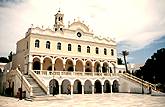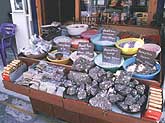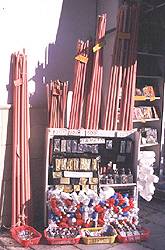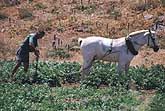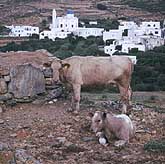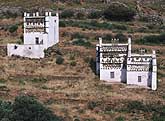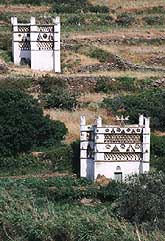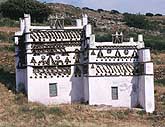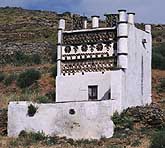Tinos, like all the islands, has suffered from a decline in population but the gorwth of the importance of the island as a religious centre has resulted in a smaller decline than might otherwise have been expected.
In line with other modern trends there has been a movement of population from the villages to the main town. Between 1940 and 1981 the population of the island fell by 32%, while the proportion of inhabitants living in the main town rose from 25% of the total to 75% of the total population.
There remain 40 inhabited villages on the island, many of them dating back to the middle ages and every one of them worth a half an hour or more of your time.
There are about 750 churches on the ilsnad of which 600 are country chapels. Each of these celebrates the feast-day of the saint after whom they are named.
There is a large Catholic population on the island but since Greece is an Orthodox country the Catholics celebrate Easter, the main orthodox religious event, at the same time as the Orthodox Christians rather than at the same time as Catholics in the rest of the world. Both the Catholics and Orthodox Christians venerate the Virgin Mary and it on August 15 that people of both faiths celebrate.
FARMING
The main crops grown on the island include oats, barley, vetch, corn and clover and among the fruits lemons, organges, tangerines, pears, pomegranates and plums. Olive and fig trees abound and wine is produced from the local vineards. Other produce includes garlic, potatoes, tomatoes, watermelons, melons and green beans. It has also been estimated that there are some 3,500 beehives on the island. An unusual sight on Tinos is the presence of cattle and locally-produced milk can be bought in the town.
In the past wheat was cultivated to feed the population which was then three times the size of the present day. At that time more than 80 windmills ground the wheat into flour, although today only a few survive.
LOCAL CUSTOMS
One of the local customs is the killing of the pig. Apparently most families own a pig and the killing of the pig is a serious event because nothing must be allowed to go to waste. Various meat products are made after the slaughter of the pig, including sausages, bacon etc.
Food features in most celebrations. At Easter every family makes cheese pies and psarakia (little fish) which are biscuits made of dough and walnuts and coated in sugar.
THE DOVE-COTES
Although there are dove-cotes on other Cycladic islands like Andros, they are far more numerous and more impressive on the island of Tinos. The pigeons are kept for their meat and for their droppings which are used as fertilizer. These stone structures have a dual purpose. Their lower areas are used for storage while the upper floors are reserved for the pigeons. It was the Venetians who introduced the idea of breeding pigeons and today there are over 600 dove-cotes on the island, most of them built in the 18th and 19th centuries.
|
Way of life
|
by Ian Swindale
Photos © Ian Swindale
Copyright: Hellenic Electronic Center
Back to Cyclades Islands

